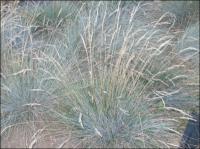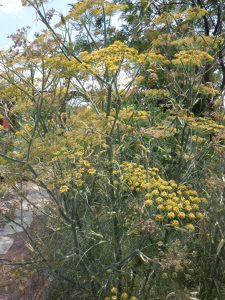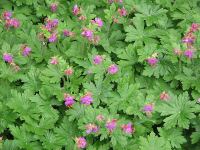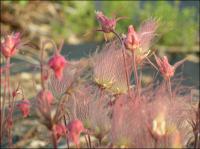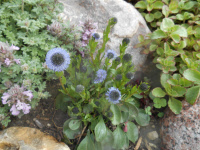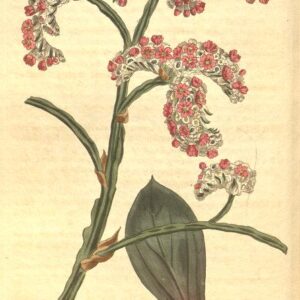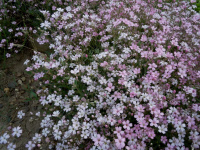Drought, Xeric & Dry Soil Plants
Showing 49–56 of 126 results
-
Euphorbia polychroma Cushion spurge syn. Euphorbia epithymoides Z 4-9
May – June a clump of flashy chartreuse bracts frame each flower altogether growing in a dome 12-18" tall and wide on erect, sturdy stems. In fall foliage turns orangey-red.
May – June a clump of flashy chartreuse bracts frame each flower altogether growing in a dome 12-18″ tall and wide on erect, sturdy stems. In fall foliage turns orangey-red.
Size: 16" x 24"
Care: Sun, moist well-drained humusy soil.
Native: Central and Southern Europe
Awards: Royal Horticultural Society Award of Garden Merit.Polychroma means many colors referring to the fact that the foliage changes colors. Named by Swedish botanist Linnaeus 1753.
-
Festuca ovina var. glauca Blue fescue Z 4-10
Short mound of silvery blue spiky grass tufts. In summer short spikes of blue-green flowers.
Short mound of silvery blue spiky grass tufts. In summer short spikes of blue-green flowers.
Size: 12" x 10"
Care: full sun, well-drained soil
Native: temperate areas in Europe
Wildlife Value: host for larvae of a few butterfliesFestuca is Latin meaning “grass stalk..” This variety described and named in 1881
-
Foeniculum vulgaris ‘Purpureum’ Bronze fennel Z 4-9
Yellow blooms on flat-topped umbels in late spring into summer, features dusky purple, feathery, compound, aromatic purple leaves with needle-like segments.
OUT OF STOCK
Yellow blooms on flat-topped umbels in late spring into summer, features dusky purple, feathery, compound, aromatic purple leaves with needle-like segments.
Size: 4-5’ x 2-3’
Care: sun to part shade in well-drained soil.
Native: Mediterranean
Wildlife Value: attracts bees and birds. Nectar plant for Swallowtail butterflies.Ancient Egyptians used fennel as food and medicine. Considered a snake bite remedy in ancient China. During the Middle Ages people hung it over doorways to drive away evil spirits. Fennel is also associated with the origin of the marathon. Athenian Pheidippides carried a fennel stalk on his 150-mile, 2-day run to Sparta to gather soldiers for the battle of Marathon with Persia in 490 B.C. The battle itself was reportedly waged on a field of fennel. Miller’s The Gardeners Dictionary, eighth ed. 1768.
-
Geranium macrorrhizum Bigroot Geranium Z 4-8
Five raspberry-purple open petals showcase its tall, purple stamens beckoning come hither to bees. Blooms in early summer. Fragrant foliage smells like pine trees at Christmas. Good groundcover in dry shade
OUT OF STOCK
Five raspberry-purple open petals showcase its tall, purple stamens beckoning come hither to bees. Blooms in early summer. Fragrant foliage smells like pine trees at Christmas. Good groundcover in dry shade
Size: 20" x 24"
Care: part shade in moist well-drained to well-drained soil
Native: Southern Europe
Awards: Elisabeth Carey Miller Botanical Garden Great Plant Pick.Geranium is Greek meaning “crane” referring to the shape of its seed resembling the bill of a crane. Cultivated in England by 1600.
-
Geum triflorum Prairie smoke, Old Man’s whiskers Z 3-7
Pale purplish-pink dangling cup-shaped flowers in spring to early summer, followed by hair-like, pink seed heads like the hair on a troll doll.
Pale purplish-pink dangling cup-shaped flowers in spring to early summer, followed by hair-like, pink seed heads like the hair on a troll doll.
Size: 10" x 8" but slow to grow to this width
Care: sun in well-drained to moist well-drained soil
Native: all of northern No. America, Wisconsin native
Wildlife Value: attracts butterflies, bees, wasps, and moths. Resists deer and rabbits.
Awards: Great Plants for Great PlainsIntroduced to gardens in 1609. Many Native American medicinal uses. Blackfeet used it to cure coughs, skin sores and wounds on people and horses, swollen eyes, canker sores, and fuzzy thinking in people. Crushed, ripe seeds made a perfume. Okanagan-Colville women made a love potion from the roots, as well as curing vaginal yeast infections. The Eastern Cascades of Canada brewed a medicinal tea for eye-wash, sore throats, and general aches from the plant. Sioux used it for many ailments: sore eyes, canker sores, sore throat, perfume, wounds, and added it to mixtures of plants for smoking. Collected by Meriwether Lewis on June 12, 1806 on the Weippe Prairie, not far from the villages of the Nez Perce in Idaho.
-
Globularia cordifolia Globe daisy, Wedge leaved globularia Z 5-9
Dense, blue, globe-shaped umbels in spring
OUT OF STOCK
Dense, blue, globe-shaped umbels in spring, mat forming, leathery, spoon-shaped leaves.
Size: 5” x 12”
Care: sun in well-drained soil
Native: alpine pastures in Switzerland and Pyrenees
Awards: Royal Horticultural Society Award of Merit.Collected before 1753. “The most desirable (Globularia) for the rockwork is the neat G. cordifolia which is a little prostrate trailing shrub with bluish flowers.” William Robinson 1879.
-
Goniolimon speciosum syn. Statice speciosa, Limonium Dwarf Statice Z 3-9
Evergreen, flat, agave-like blue-green rosette of leaves. In mid-summer light pink, flat-topped flower clusters held on leafless stems 10-12” above foliage. Very different, fun and easy to grow.
Evergreen, flat, agave-like blue-green rosette of leaves. In mid-summer light pink, flat-topped flower clusters held on leafless stems 10-12” above foliage. Very different, fun and easy to grow.
Size: 10-12’ X 8”
Care: sun in well-drained soil
Native: Steppes of Eurasia: Russia, Siberia, Mongolia & western ChinaCollected by German naturalist Johann Georg Gmelin (1709-1755)1st described in 1753 then named and renamed several times. Pictured in Curtis’s Botanical Magazine 18. No. 656 1803.
-
Gypsophila repens ‘Rosea’ Creeping baby’s breath Z 4-7
Tough but dainty appearing pink flowers on short, thin stems smother gray-green leaves from June to October. Excellent groundcover, front of the border or rock garden plant.
Tough but dainty appearing pink flowers on short, thin stems smother gray-green leaves from June to October. Excellent groundcover, front of the border or rock garden plant.
Size: 8" x 10-12"
Care: Full sun in well-drained soil.
Native: Mountains of central and southern EuropeGypso is Greek meaning “gypsum or lime.” Phylos means “loving.” Plant requires limey (alkaline) soil. Discovered in Siberia in 1774.


